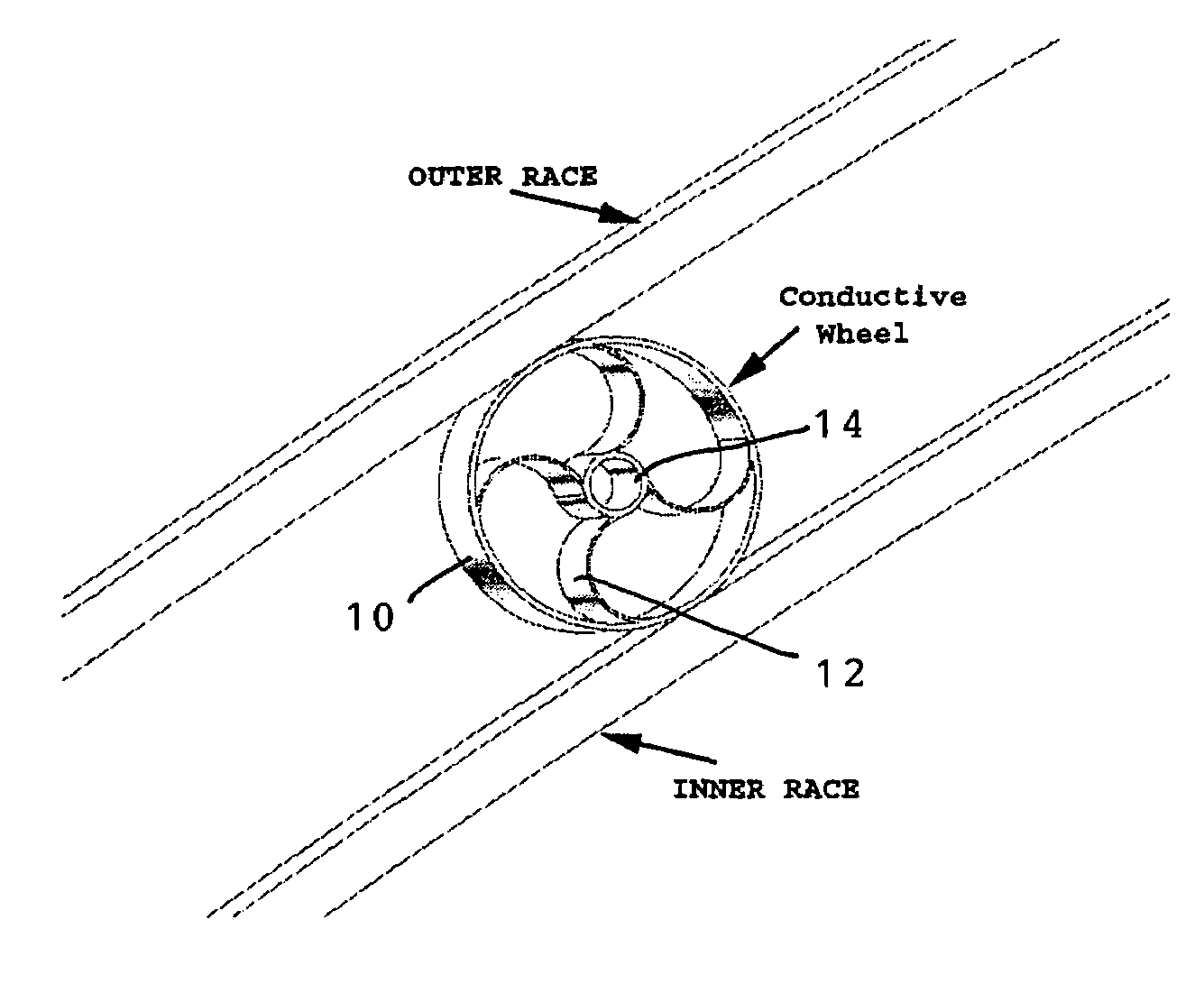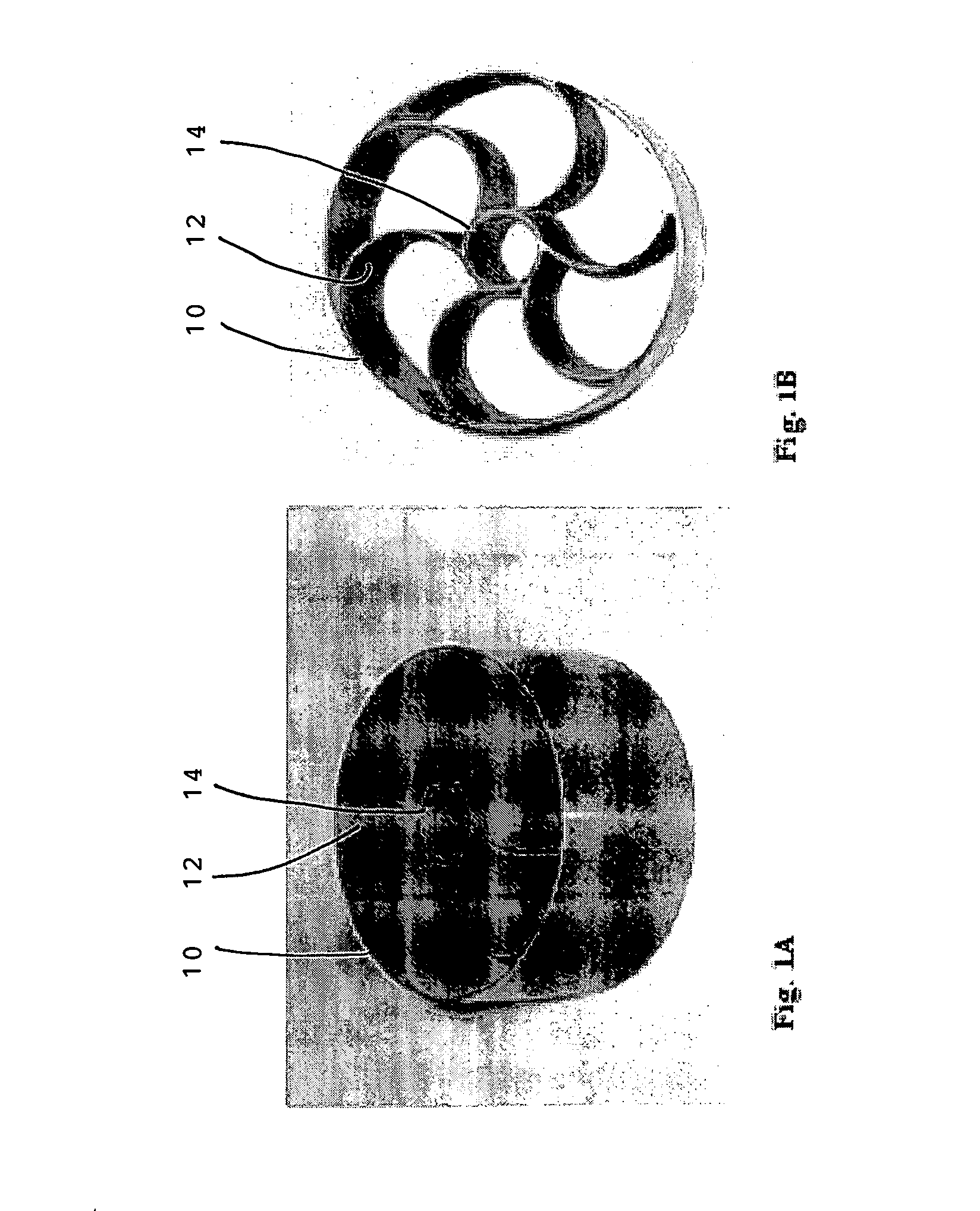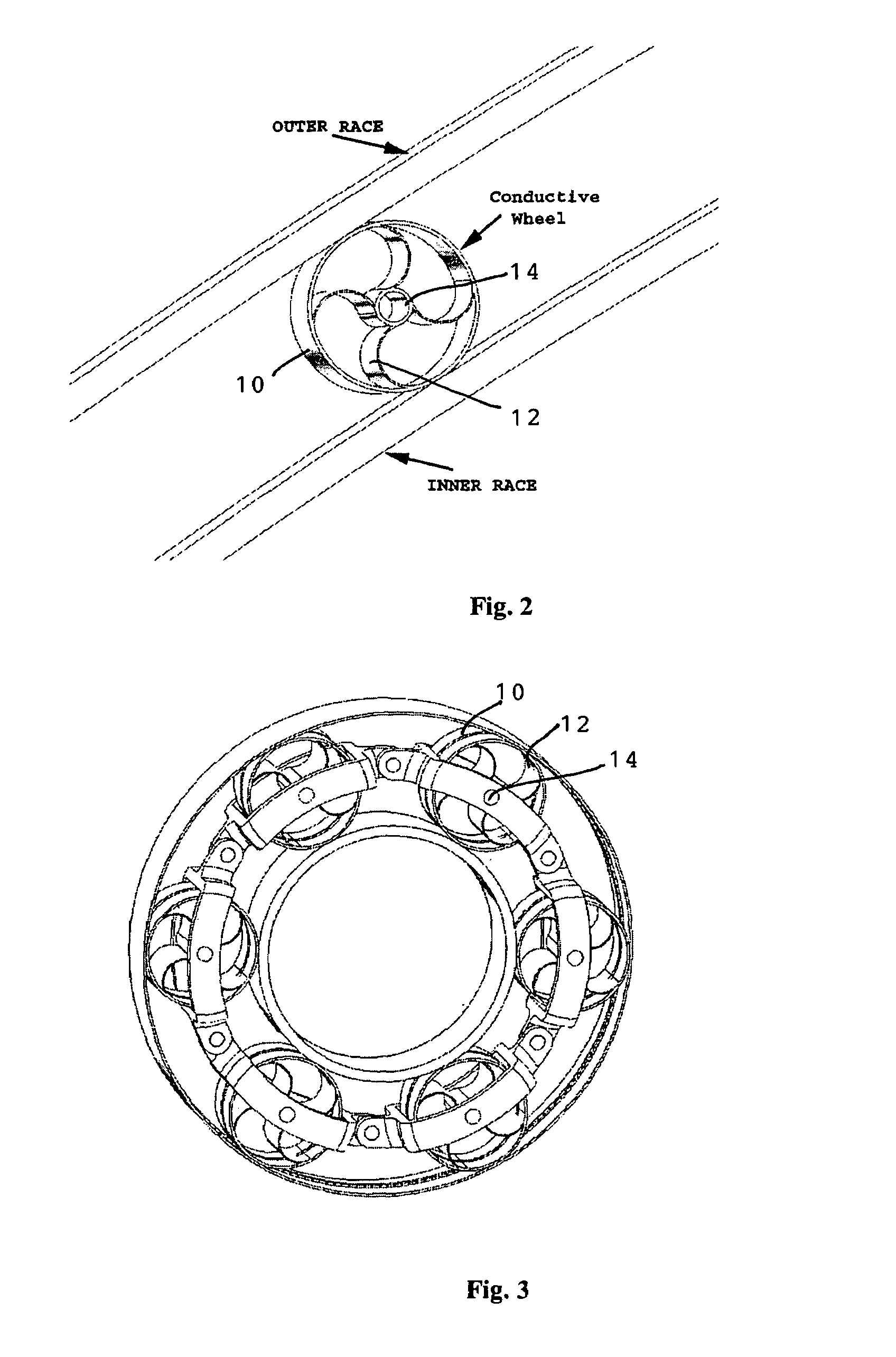Roll-ring conductive wheel
a conductive wheel and rolling ring technology, applied in the direction of insulated conductors, cables, conductors, etc., can solve the problems of degrading the performance of the conductive path, graphite or thin wire brushes are a source of detrimental electrical noise, and degrading the prior art. , to achieve the effect of less contact area, less current carrying capacity, and less nois
- Summary
- Abstract
- Description
- Claims
- Application Information
AI Technical Summary
Benefits of technology
Problems solved by technology
Method used
Image
Examples
Embodiment Construction
[0020]Referring to FIGS. 1A–1B, the conductive wheel is formed as a roll-ring having a thin walled metal cylinder 10 that has a plurality of spokes 12 connecting the cylinder to a central hub 14. The shape and number of spokes can vary greatly, depending on the application. The wheel is flexible so that it can be compressed between two conductive surfaces. FIG. 2 shows a roll-ring between inner and outer linear races. FIG. 3 shows a rotary application of the invention between two concentric rings that undergo relative motion between them. By compressing the wheel into an elipse, it serves to provide a good electrical connection between the two rings and allows for slight misalignment or gap variation between the rings while still providing a conductive path. The formed elipse also greatly increases the contact area between the wheel and each of the rings. This is important for noise reduction and high current flow.
[0021]As one ring rotates or moves with respect to the other ring, th...
PUM
 Login to View More
Login to View More Abstract
Description
Claims
Application Information
 Login to View More
Login to View More - R&D
- Intellectual Property
- Life Sciences
- Materials
- Tech Scout
- Unparalleled Data Quality
- Higher Quality Content
- 60% Fewer Hallucinations
Browse by: Latest US Patents, China's latest patents, Technical Efficacy Thesaurus, Application Domain, Technology Topic, Popular Technical Reports.
© 2025 PatSnap. All rights reserved.Legal|Privacy policy|Modern Slavery Act Transparency Statement|Sitemap|About US| Contact US: help@patsnap.com



